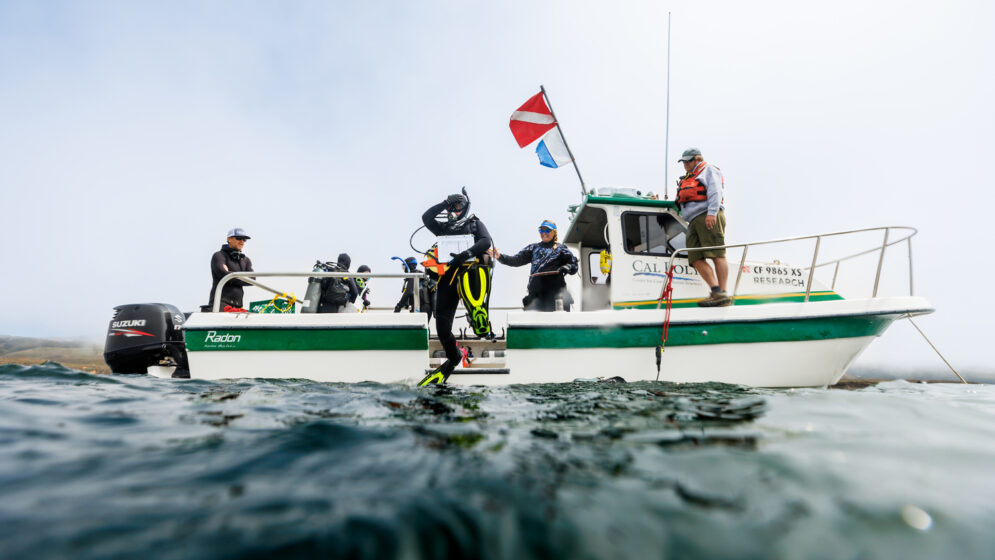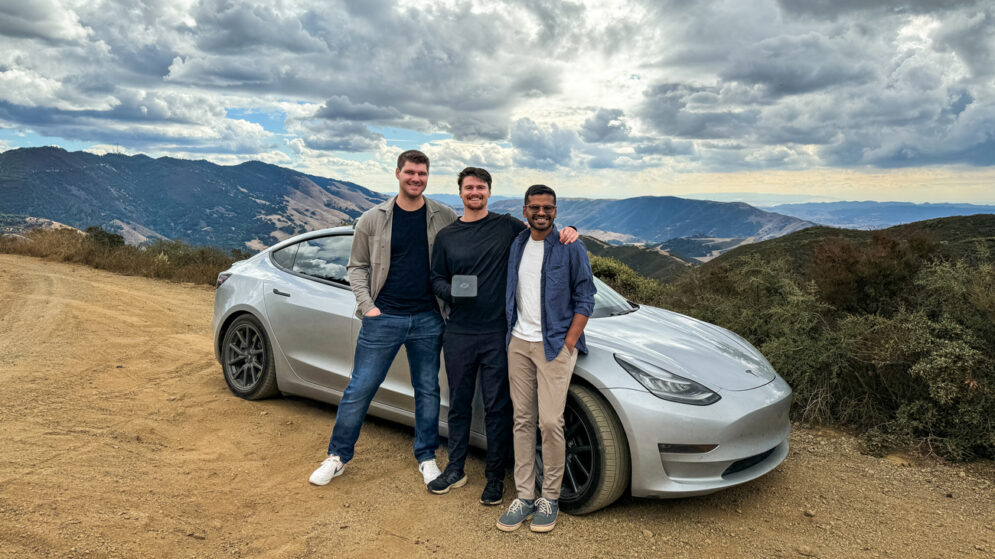Course Description
Into the Heart of Campus
In a course on HVAC systems design, engineering students get a look inside the inner workings of campus that most other students never even think about.
Written by Larry Peña // Photos by Joe Johnston
Share this article:
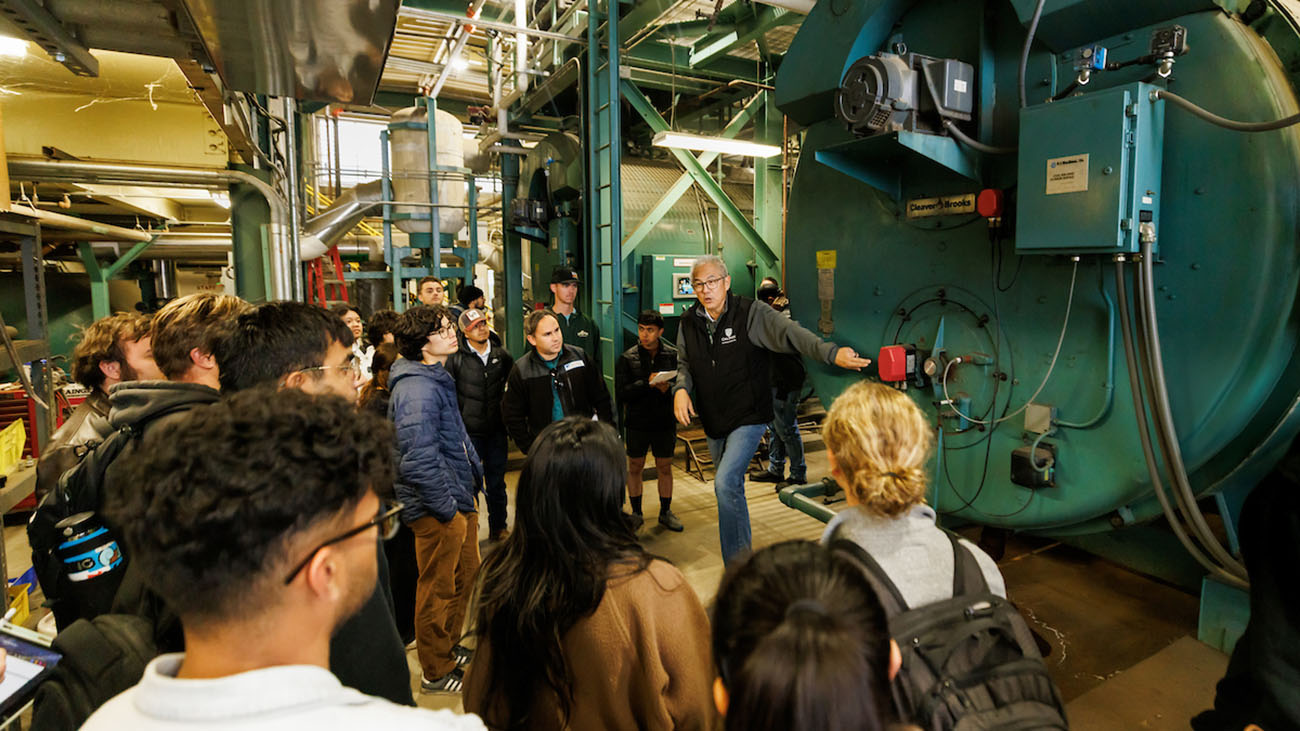
Mechanical engineering lecturer Larry Sun (center) introduces a group of HVAC students to the boilers that provide hot water all across the Cal Poly campus.
In a large, noisy room in Cal Poly’s Central Plant, 20 students gather around three massive boilers, which roar as they heat and pump thousands of gallons of water out to every corner of campus. As mechanical engineering lecturer Larry Sun describes how they work — think of your home’s water heater but scaled up more than 100 times — students gasp as they take turns peeking into viewing ports on the end of the tanks, getting a glimpse of enormous jet burners powering the heating process within.
If the campus is a body, this building is the heart and lungs that keep everything else pumping. In this one location, the students learn about the staff and the systems that monitor heating, ventilation, air conditioning (HVAC) and water flow for the hundreds of buildings and thousands of rooms on campus.
Seeing a system at that scale run that well, given that so many things could go wrong, always fascinates me.
Max Scott, Mechanical engineering student
The group is here for one of a series of tours as part of ME 456: HVAC Air and Water Distribution System Design, which aims to give students in the Mechanical Engineering Department’s heating, ventilating, air-conditioning and refrigeration concentration an up-close look at how these systems work in the real world.
“It gives students a chance to see the final build of successful HVAC projects,” says Daniel Castro, a mechanical engineering lecturer who co-teaches the class alongside Sun. “In industry, they will be designing these systems and potentially walking around jobsites, so it’s a good way to prepare them for what they can expect to see and do.”
Before the campus tours, the students in ME 456 prepare by doing hands-on testing with the equipment they’ll see at work: getting to know how it functions and taking measurements to determine operating conditions.
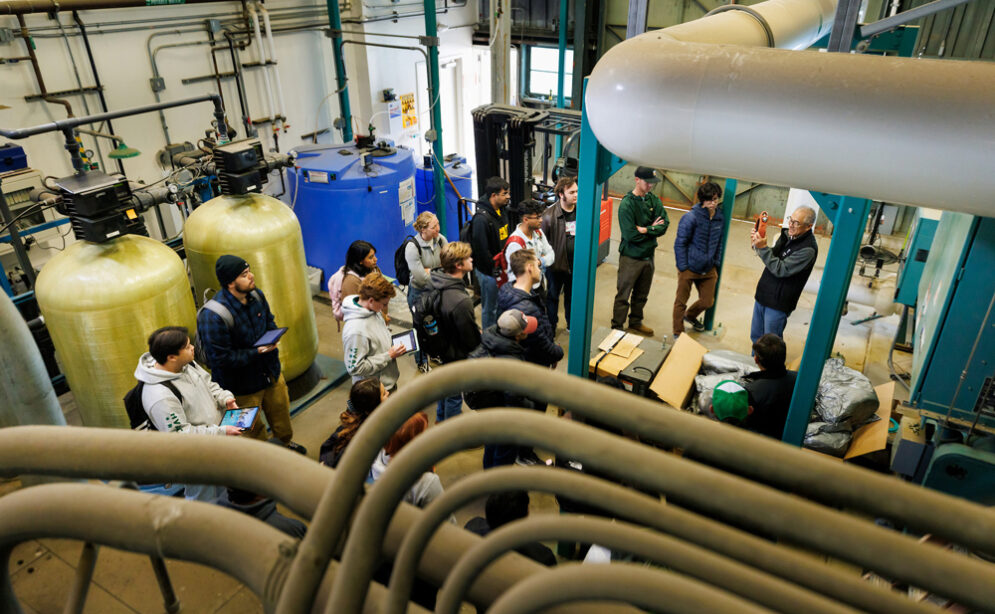
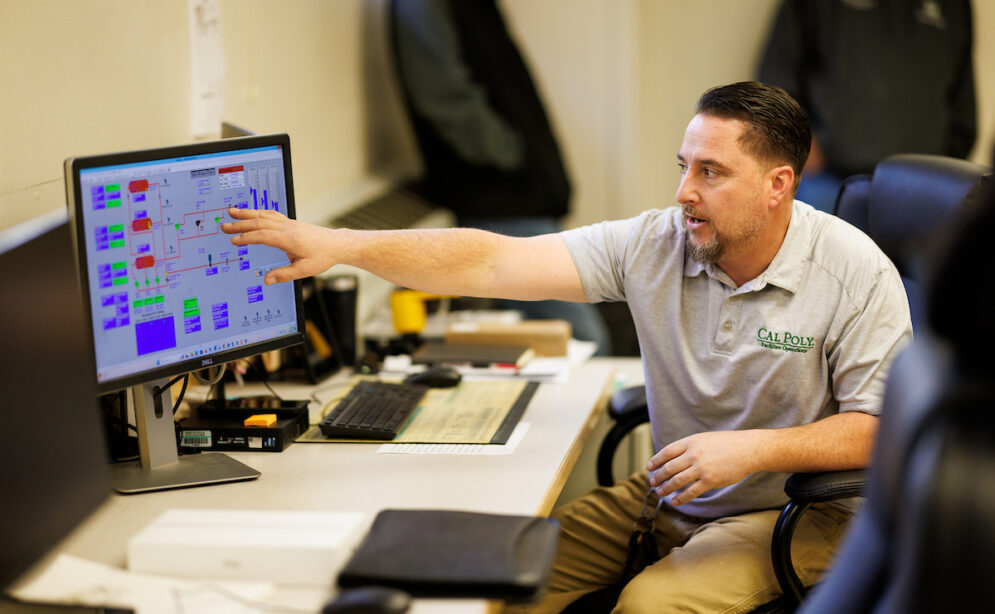
First image: Students navigate large tanks and pipes in the plant. Second image: Central Plant technician Evan Powels shows HVAC students the system that monitors air and water flow to every room on campus.
On the tour of the Central Plant, Castro and Sun, as well as members of the plant’s staff, guide the students through the building’s notable features — the massive boilers that heat campus water; chillers, some of which were once repurposed from the Performing Arts Center and now provide cold water across the campus; a thermal storage tank and cooling towers large enough to be seen from across much of campus; and the control room where staff can monitor air and water flow conditions in every room on campus in real time.
This quarter, the class has explored the HVAC facilities within other major campus buildings, including the Baker Center for Science and Mathematics, the Bonderson Engineering Projects Center and the Vista Grande Dining Complex. Each building has its own unique challenges and features, but the sheer scale of the Central Plant’s operations dwarfs all the others.
“The most amazing thing to me about the Central Plant tour was the ability for the staff there to monitor every building on campus from one place,” says Max Scott, a mechanical engineering student and president of Cal Poly’s student branch of the American Society of Heating, Refrigerating, and Air-Conditioning Engineers. “Seeing a system at that scale run that well, given that so many things could go wrong, always fascinates me.”


